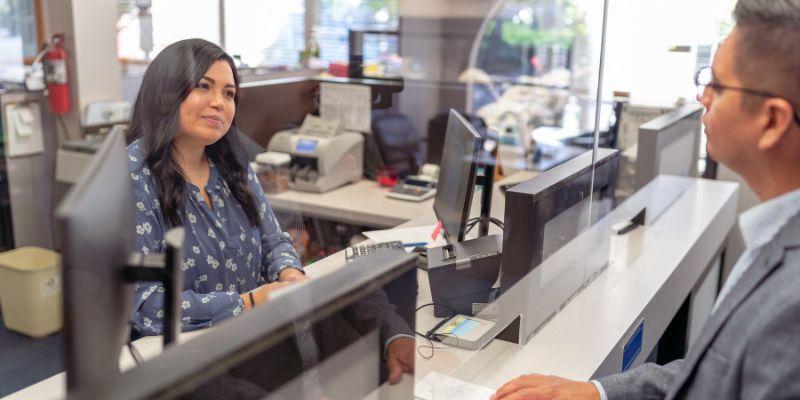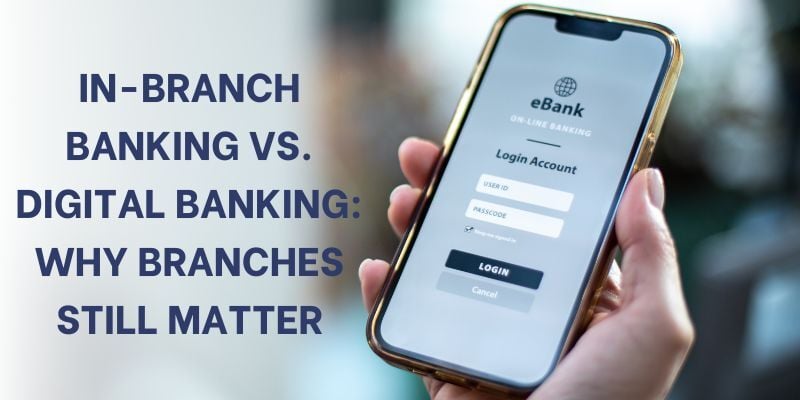Retail banking plays a significant role in helping citizens with their money. It provides a platform to save, borrow, and manage our finances.
But things are changing fast, especially with technology!
Now, more than ever, retail banking digital transformation is reshaping how we do banking.
Did you know that most people do their banking online now? Over 71% of all banking happens through computers or phones. But what does this mean for you? How does it affect the way you save or borrow money?
This article will explore how digital technology is changing retail banking. From metropolitan cities to small towns, we’ll see how technology makes banking more straightforward and accessible. We’ll explore examples and discuss how this affects you and your community.
So, let’s learn more about how digital transformation is changing our banking practices. It’s an exciting time for finance, and we’re here to help you understand it all.
Future Trends and Predictions

As digital transformation continues to reshape retail banking, future trends and predictions are crucial to staying ahead.
Let’s explore the evolving domain and anticipate the next wave of innovations in digital transformation for retail banking.
1. Continued Innovation in Digital Banking
As banking evolves, new retail banking trends make banking more straightforward and convenient. These innovations transform how we manage money, from mobile banking apps to intelligent assistants.
With ongoing changes, retail banking is becoming easier and faster, offering more options for customers. We recommend that you stay abreast of exciting updates as banks continue to improve customer banking experience with the latest technology and improve their operational efficiency.
2. Integration of Emerging Technologies
In retail banking, innovation is driving the integration of emerging technologies to enhance customer experiences. Digital trends in retail banking are paving the way for adopting revolutionary solutions like cash deposit machines (CDM).
Owing to these advancements, banks can offer customers greater convenience and accessibility. With CDMs, customers can conveniently deposit cash without requiring lengthy queues, streamlining operations and improving overall efficiency.
3. Regulatory and Compliance Challenges
Amidst the innovation in retail banking and advancements in retail banking technology, banks face regulatory and compliance challenges. These rules ensure that banks operate fairly and protect customers’ interests, but they can also be complex and require a lot of paperwork.
Banks must navigate these regulations carefully to avoid penalties and maintain customer trust. It’s like following the rules in a game – sometimes tricky, but essential for everyone’s safety and fairness.
Ensuring that they stay updated and adapt to changes, banks can ensure they meet these requirements while continuing to innovate and provide top-notch services to customers.
4. Shifting Customer Expectations
As retail banking transformation reshapes the industry, customer expectations are evolving too. It’s like a journey – customers want banking experiences that are easy, fast, and personalized to their needs.
They expect more online options, like mobile banking apps, and quicker service at branches. Banks must keep up with these changes to stay competitive and keep customers happy.
When listening to customers’ wants and finding new ways to meet their needs, banks can create better experiences and build stronger relationships throughout their customer journey.
Impacts of Retail Banking Digital Transformation

Let’s examine how retail banking’s digital transformation is changing the game. With all the new tech and changes happening in banking, it’s essential to understand how they impact us.
From easier online banking to faster service at branches, these changes make banking more straightforward and convenient for everyone.
So, let’s explore the ways that retail banking digital transformation is changing things and what it means for you as a customer and bank alike
1. Improved Customer Experience
When discussing retail banking transformation, we focus on elevating the customer journey. With evolving retail banking trends and the integration of digital banking solutions, banks are committed to enhancing your experience.
Imagine accessing banking services seamlessly through self-service kiosks or mobile apps, ensuring quick responses and personalized assistance. This emphasis on improved customer experience revolutionizes how banks interact with customers, fostering greater satisfaction and loyalty.
Bank Alfalah Transforms Banking Experience with Wavetec’s Self-Service Innovations
Bank Alfalah, one of Pakistan’s largest private banks, has partnered with Wavetec to enhance operational efficiency through self-service solutions. With over 700 branches nationwide, Bank Alfalah recognized the need for innovative digital channels to meet customer demands.
Deploying Azimut’s CQuick Cash Deposit Machines, Bank Alfalah has streamlined cash management, reduced queue times, and improved customer satisfaction.
These contactless and secure solutions leverage advanced biometrics and modular designs to offer customers convenience and safety and transform retail banking.
2. Enhanced Operational Efficiency
Retail banking technology and its transformation is not just about customer satisfaction; it’s also about optimizing internal processes for better efficiency. Leveraging retail banking technology like AI-powered systems and digital solutions, banks are streamlining operations and reducing manual tasks.
From automating routine processes to implementing self-service options, these innovations enhance operational efficiency, allowing banks to deliver services more effectively and stay competitive.
3. Competitive Advantage
Due to the retail banking transformation, banks strive to gain a competitive edge by offering superior services and accepting innovative technologies. Banks can differentiate themselves in the market by prioritizing customer needs and leveraging digital banking solutions.
Banks aim to attract and retain customers by providing seamless digital experiences or offering innovative self-service options, ensuring a competitive advantage in the evolving banking sector.
BCI Bank Drives Digital Transformation in Retail Banking with Wavetec’s Digital Signage
BCI Bank, a leading financial institution in Chile, is spearheading digital transformation in retail banking by partnering with Wavetec to develop digital signage solutions. BCI is committed to enhancing customer experiences and leveraging innovative digital technologies to revolutionize its banking centers.
Wavetec’s digital signage project enables BCI to deliver engaging content, manage entertainment seamlessly, and ensure system stability across branches.
4. Challenges and Risks
However, navigating the retail banking digital transformation domain comes with challenges and risks. Banks must address various hurdles, from cybersecurity threats to regulatory compliance, to ensure smooth operations.
As customer expectations evolve and retail banking technology advances, banks face the challenge of maintaining consumer trust while safeguarding sensitive data.
By prioritizing cybersecurity measures and staying abreast of regulatory changes, banks can mitigate risks and confidently continue their journey of transformation.
4 Strategies for Successful Retail Banking Digital Transformation

Let’s explore how banks are using tech to make banking easier. From apps to smart ATMs, digital changes are improving your banking experience. We will now look at strategies for successful retail banking digital transformation.
1. Strategic Partnerships and Collaborations
Strategic partnerships and collaborations play a significant role in retail banking transformation. Banks team up with other companies to offer new features and services.
Whether teaming up with tech companies to develop innovative apps or partnering with retailers to offer special discounts, these collaborations make banking more exciting and convenient.
If they work together, banks can stay ahead of the curve and continue to offer the best in digital transformation retail banking.
2. Agile Methodologies and Iterative Development
Banks are now using faster methods to improve retail banking. Instead of taking a long time to make changes, they use “agile methodology.”
This means they work on small parts of a project at a time and test them quickly. So, instead of waiting months or years for new things, they can try out ideas and see if they work much faster.
This means you see improvements and updates to your banking experience more often. By staying agile and flexible, banks can keep up with the fast pace of retail banking trends and continue to offer you the ultimate in digital transformation retail banking.
3. Customer-centric approach and Feedback Loops
Regarding innovation in retail banking, customer feedback matters more than ever. Banks are taking a customer-centric approach to development, listening to your needs and preferences to create better banking experiences.
Whether through surveys, focus groups, or social media, banks constantly gather feedback from customers like you. By listening to what you say and making changes based on your input, banks can ensure that their digital transformation retail banking efforts align with your needs and expectations.
4. Continuous Learning and Adaptation
As we have seen, banks are constantly learning and adapting to new trends and technologies. Whether through employee training programs or with educational institutions, banks are constantly investing in learning and development.
Banks that stay ahead of the curve and implement new ideas can continue offering the best digital transformation retail banking. So, the next time you see a new feature or service from your bank, remember that it’s all part of their commitment to continuous learning, adaptation, and improving operational efficiency.
Final Words
As explored, retail banking’s digital transformation is an ongoing evolution that promises to redefine how we interact with financial services. As banks continue to accept digital innovation and adapt to changing customer needs, the industry is undergoing an insightful shift.
Banks are preparing to succeed in the digital age by collaborating with others, using flexible working methods, and focusing on customer satisfaction. They’re always learning and changing to stay ahead and ensure that they can offer new and helpful services.
As we look to the future, retail banking digital transformation promises to deliver more accessible, efficient, and personalized banking experiences for everyone.
BOOK A FREE DEMO



![Top 10 Customer Experience Trends in Banking [2025] 14 top-10-customer-experience-trends-in-banking](https://www.wavetec.com/wp-content/uploads/2025/04/top-10-customer-experience-trends-in-banking.jpg)

